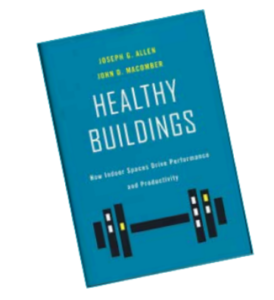Being Proactive About Water Quality
 Our October newsletter introduced a book titled “Healthy Buildings: How Indoor Spaces Drive Performance and Productivity.” The following article discusses another of the nine foundations of a healthy building discussed in that book.
Our October newsletter introduced a book titled “Healthy Buildings: How Indoor Spaces Drive Performance and Productivity.” The following article discusses another of the nine foundations of a healthy building discussed in that book.
WATER QUALITY
There are three main avenues of personal exposure to contaminants. They include dermal exposure (through our skin), respiratory exposure (through our lungs), and ingestion, commonly done by eating or drinking.
Water, which is considered necessary for life, can also be a source of contaminants. Because of this, the U.S. Environmental Protection Agency (EPA) has created and regulates the nation’s primary and secondary drinking water standards. As part of those regulations, municipal water systems must sample and analyze their water to ensure that it doesn’t contain elevated levels of any items listed on the EPA’s list. But those municipalities are only required by federal law to sample their water once a year.
That doesn’t seem to be frequent enough to me, but hey, I don’t make the rules!
Some of our largest clients — those with the deepest pockets and the most to lose — now have domestic water that is in their buildings’ holding tanks sampled and tested annually. We do this sampling at the same time as our proactive IAQ review of their building. We then add the results of the laboratory’s analytical report into our IAQ report.
Water samples are collected from a domestic holding tank and placed into eight separate bottles. The samples are then put on ice and forwarded to the analytical laboratory. Once there, the samples are analyzed for metals (copper, lead, zinc, etc.), physical factors (hardness, ph, dissolved solids), inorganic analytes (chloride, fluoride, sulfates), as well as trihalomethanes, acids, and volatile compounds. The complete list of 94 separate compounds is pretty comprehensive. Ultimately, the results provide a snapshot of what you, your tenants, and staff regularly ingest.
Showing a tenant that you are keeping their staff’s health in mind with the water your building is delivering is a real positive! And if you do find an elevated concern for a chemical, metal, or some other compound, you can aggressively resolve it before a problem occurs.
Being proactive about water quality and the indoor air that your building delivers goes a long way toward having a healthy building — which ultimately drives performance and productivity.
